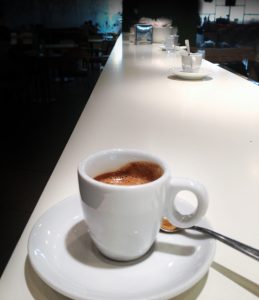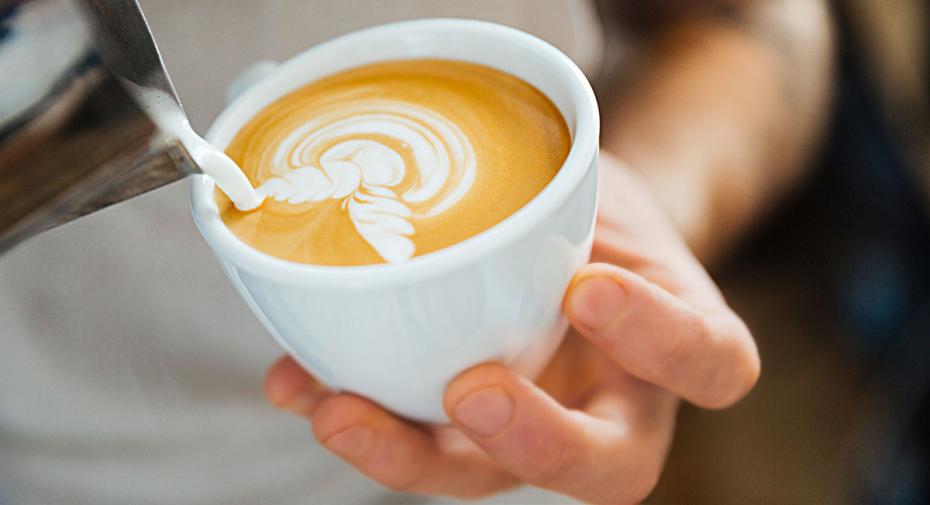I am an odd Italian coffee lover: I started drinking it when I was in my twenties, spending my youngest years in worship of the more exotic world of teas. I still like tea, but coffee… coffee is a different story. And as I lived for decades outside of Italy, I developed a taste for non traditionally Italian kava: I love Americano coffee and I get vanilla flavoured dark roast online every two months, as I fell in love with it on my first trip to the US, about seven years ago.
I would define myself an open minded Italian coffee drinker, which is, indeed, a bit of a rarity, because when it comes to coffee, we Italians get as strict as the principal of a victorian grammar school and as picky as the spawn of an emperor. We expect, nay, we demand quality – which is normal, when you love something – and we reluctantly venture far from the dark, bitter purity of our espresso (by the way, never call it that, in Italy. It is simply “caffè,” just like Sophia means always Loren and Marilyn means always Monroe).
In Italy, expect industrial strength coffee, served in tiny cups and a no-messing-around coffee menu. Yet if it is good coffee you love, you will be pretty happy nevertheless.

The Brew
First of all, Italian coffee drinks usually come in one size only. A standard espresso comes in an espresso cup, cappuccino in a medium size cup and so does caffé latte. Italy does not do small, medium large and grande: your drink is perfect just the way it is, we think, quantity included.
Some of you may think I am wrong: in the end, in Italy you can order a ristretto and a caffé lungo, and they look just like a different size espresso, right?
Wrong, because both ristretto and caffé lungo are types of coffee in their own right, the first made using less water, the latter with more. In other words, getting a ristretto does not mean getting a small espresso and getting a caffé lungo is not the equivalent of getting a large one. Different brews, keep it in mind.
The Variety
One of the first things we Italians notice when coming to the US is the immense variety of coffee beverages available: flavoured coffees, mochas, coffees with syrups, coffees with multiple espresso shots, frappuccinos, cappuccinos the size of a small building.
Without a doubt, when it comes to choice, the US beats Italy hands down.
Yet, we Italians do not worry about it, because we like our coffees traditional and simple. Indeed, simplicity is key to Italian kava, because coffee must be good on its own, without anything changing its aroma too much: coffee purists do not even add sugar to it (I am, indeed, one of them).
However, we do offer some selection, too: beside the already mentioned ristretto and caffé lungo, espresso lover may also like to try a caffé corretto, where the “correction” consists in a shot of – usually – good, old fashioned grappa. Alternatives also involve the addition of aniseed liqueur, cognac or sambuca.
If you love your coffee milky, fear not, because Italy may not have grande double skinny lactose-free coconut lattes, but you should manage to satisfy your caffeine cravings anyway. Cappuccino is, of course, the king of Italian milky coffees, so you cannot go wrong with it, but remember that ordering cappuccino later than 10 am may be considered peculiar in some places, as cappuccino is Italy’s quintessential breakfast drink.

There are other options, though. If you are in the North of the country, you can ask for a marocchino (literally, a “moroccan”), which is a bit like a cappuccino upside down, served in a smaller cup: first goes the cocoa powder, then the milk froth and, lastly, the espresso shot. If you are into the bitterness and sharpness of good espresso, but like the creaminess of milk, you can ask for a macchiato: now, macchiato is usually available at cafés around the world, but in many places is nothing more than an espresso with a lot of milk froth on top. This is not the way it is usually made in Italy, were macchiato is rigorously served in an espresso cup, and enriched by only a drop of hot, textured milk. If you would like something more luscious, but just as strong, you can ask a macchiato con panna, that is, a macchiato with a dollop of sweet whipped cream on top. It cannot really get better than that.
Last but not least, of course, caffé latte: this is what you need to order in Italy if your American drink of choice is a latte. Similar to cappuccino, just less frothy.
Different styles and different sizes, when it come to Italian and American coffee. One thing in common: the dark brew does, indeed, keep both countries “running:” what – indeed – will we be, without our precious morning kava?






























